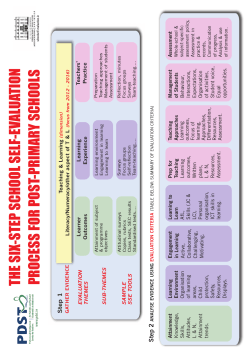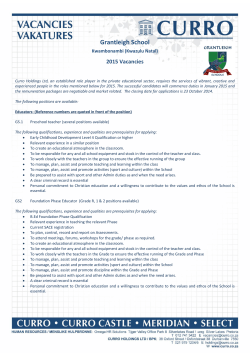
Running Your Club Marketing: NSW Sport and Recreation Weaknesses
NSW Sport and Recreation Running Your Club Marketing: SWOT analysis Before developing the marketing plan to help you achieve your future marketing objectives, you need to know where you are now, and why you are there. A useful way to get a clear picture of where you organisation is currently is by using the SWOT analysis. SWOT stands for Strengths, Weaknesses, Opportunities and Threats. By using the SWOT analysis you can identify where you stand in the market and from that point go ahead and make future plans based on the strength of your knowledge. Working through this process will give you a clearer idea of ■ what it is that your organisation does well, what they need to improve on (strengths and opportunities) ■ where your organisation has competition which can be defended (strengths and threats) ■ where your organisation needs to change to product itself from outside influences (weaknesses and threats) Weaknesses Weaknesses often appear as the direct opposite of the strengths listed above and include: ■ Weak financial base ■ Diminishing need or desire for your product ■ Few volunteers ■ No support from local businesses ■ No support from local politicians ■ No support from local service organisations ■ Out of date ill equipped club house ■ Poor committee structure ■ Overworked and tired committee ■ Fewer new members ■ Lack of interest in your sport. ■ where your organisation needs to look at its priorities (weaknesses and opportunities). Strengths When you look at the strengths, concentrate on the organisation itself and its ability to achieve the outcomes you want. Examples of strengths include: ■ Strong financial base ■ Growth area for your product ■ Group of skilled volunteers ■ Support from local businesses ■ Support from local politicians ■ Support from local service organisations ■ Well equipped club house ■ Well structured committee ■ Enthusiastic and capable committee. Opportunities Opportunities refer to the possibilities of new growth because of the changes in the external environment and can include such things as: ■ Promotion of sport by government authorities eg renewed ‘Life in it” campaign ■ New population of potential users moving into the area, housing estates with children ■ Grants by local authorities to encourage sport ■ Grants by state authorities to encourage sport ■ Grants by federal authorities to encourage sport ■ Organisations looking to sponsor local activities ■ Seasonal interest in particular sports, cricket in summer football in winter ■ International or national interests in sports eg. Commonwealth or Olympic Games www.dsr.nsw.gov.au/industry NSW Sport and Recreation Running Your Club Marketing: SWOT analysis (continued) ■ Promotion of sport to different age group eg. lawn bowls to teenagers ■ Promotion of sport to different gender eg. football – all codes – to girls. Threats Threats, as with strengths and weaknesses the threats are often very similar to the opportunities. Examples of threats include: ■ Organisations giving up sports to sponsor to concentrate on other areas ■ Seasonal interest in particular sports which is n direct competition with your own sport eg. competing codes of football ■ Promotion of sport to different gender which competes with your sports interest eg. netball and soccer for girls ■ Other interests including hobby groups, television, video games, school activities, part time work for teenagers and so on ■ Time related issues for example, competition for volunteers time, longer working hours, both parents working – children unable to attend, limited available free time for both children and parents ■ Other organisations with better facilities ■ Lack of knowledge and interest in your product. www.dsr.nsw.gov.au/industry NSW Sport and Recreation Running Your Club SWOT analysis SWOT analysis template. Conduct a SWOT analysis for your organisation Weaknesses Opportunities Threats External Internal Strengths www.dsr.nsw.gov.au/industry
© Copyright 2025





















